Listen to this article:
Key Takeaway
Explore the transformative power of hand mudras to enhance your yoga and meditation practices.
You may have seen a Buddhist statue or a meditation practitioner using the classic yoga hand position of the index finger touching the tip of the thumb. This is the most famous mudra, or hand gesture, called Gyana Mudra.
Mudras are used to generate a specific state of mind during yoga or meditation practice. Because different parts of our hands are correlated with specific energy circuits in the body, mudras are powerful ways to stimulate different areas of the brain and nervous system.
With the Hand Mudras Chart, you may embrace the transforming path to inner peace and mental clarity. It’s a potent tool for developing a disciplined meditation practice and improving your meditation skills.
Let’s explore the meaning and history of mudras, as well as how to use the 10 most common meditation hand positions to enhance your yoga or meditation practice.
Contents
- 1 What are Mudras?
- 2 Hand Mudras Chart: Why Use Mudras During Meditation?
- 3 13 Most Common Mudras: Meanings of Sacred Hand Gestures
- 3.1 1. Gesture of Knowledge: Gyan Mudra
- 3.2 2. Mudra of Fearlessness: Abhaya Mudra
- 3.3 3. Flowing Air Mudra: Vayu Mudra
- 3.4 4. Detoxification Hand Position: Apana Mudra
- 3.5 5. Mudra of Holding the Jewel: Manidhara Mudra
- 3.6 6. The Teaching Mudra: Vitarka Mudra
- 3.7 7. Mudra of Generosity: Varada Mudra
- 3.8 8. Life Force Gesture: Prana Mudra
- 3.9 9. Gesture of Perception/Intellect: Buddhi Mudra
- 3.10 11. Namaskara or Anjali Mudra
- 3.11 12. Gesture of Enlightenment: Dhyana Mudra
- 3.12 13. Gesture of Unity: Sankalpa Mudra
- 4 The Importance of Hand Mudras in Healing
- 5 The Significance of Mudras in Improving Mindfulness and Focus
- 6 Closing Thoughts
- 7 FAQs
What are Mudras?
Mudras are specific meditation hand positions or gestures that help draw your focus inward and channel energy to certain parts of the body. A mudra can involve various placements of your fingers, thumbs, and palms to stimulate different parts of the body. Some mudras can involve the entire body, but most focus specifically on the hands.
The Sanskrit word mudra translates to “gesture”, “seal”, or “mark”. These hand signs have been used in Buddhist, Jainist, and Hindu cultures for thousands of years as part of religious and ceremonial practices ranging from dance to sculpture to yoga.
However, mudras are considered secular and not necessarily linked to specific religious beliefs. These ancient hand gestures are closely interconnected with breathing, meditation, and yoga.
Though you most commonly see them in seated meditations (with hands in mudra resting on the knees), mudras can also be incorporated into yoga asanas and pranayama breathing techniques.
There are technically 5 basic categories of mudras:
- Yogic
- Spiritual
- Curative
- Religious
- Customary
There over 100 mudras that have been specifically used in meditation practice over the centuries. All of them share the common purpose of affecting the flow of life force energy, or prana, throughout the body.
Hand Mudras Chart: Why Use Mudras During Meditation?
Specific hand gestures can have spiritual benefits as well as positive impacts on physical and emotional health. But, to fully understand the benefits of mudras, we must first explore the ancient healing Indian system of Ayurveda.
According to Ayurvedic philosophy, the human body is constructed of 5 elements:
- Agni (fire)
- Vayu (air)
- Aakash (space)
- Pruthvi (earth)
- Jal (water)
These 5 elements also coincide with our hands:
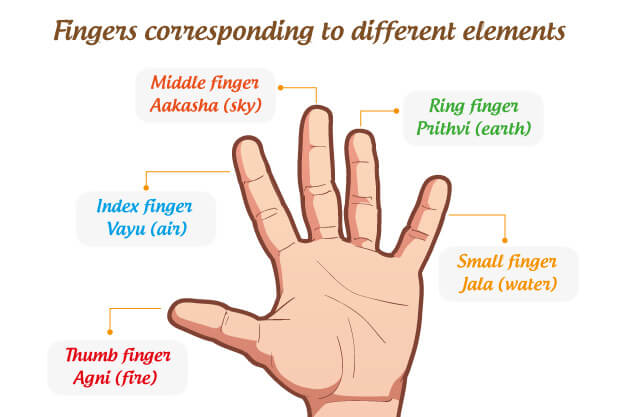
When we are healthy, it is believed that the body has the perfect balance of all these elements. But imbalances in the elemental energy can lead to any manner of illnesses or disease.
Mudra therapy is based on an ancient science that aims to connect energy-flows between the mind, body, and spirit. It may seem subtle, but the hand and finger movements of mudras have the capacity to help physical, mental, and emotional wellbeing. Mudras help restore balance in the body.
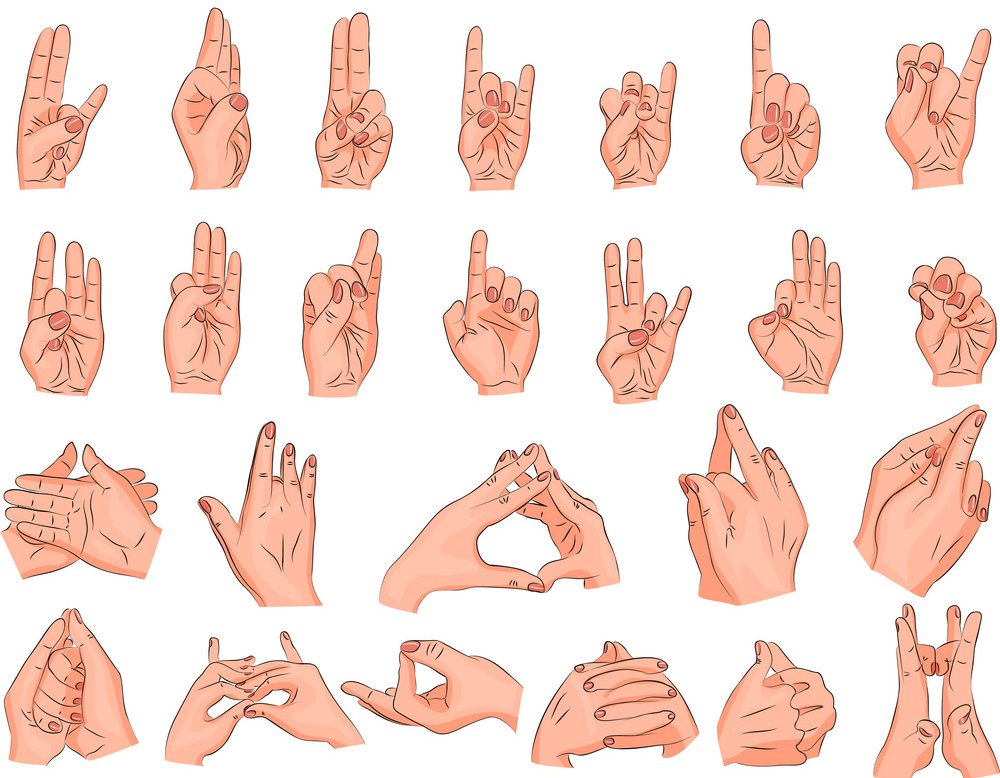
You can find mudras for everything from headaches and lung health to stress or spiritual connection. There are also several links between mudra positions and acupressure points in the hands:
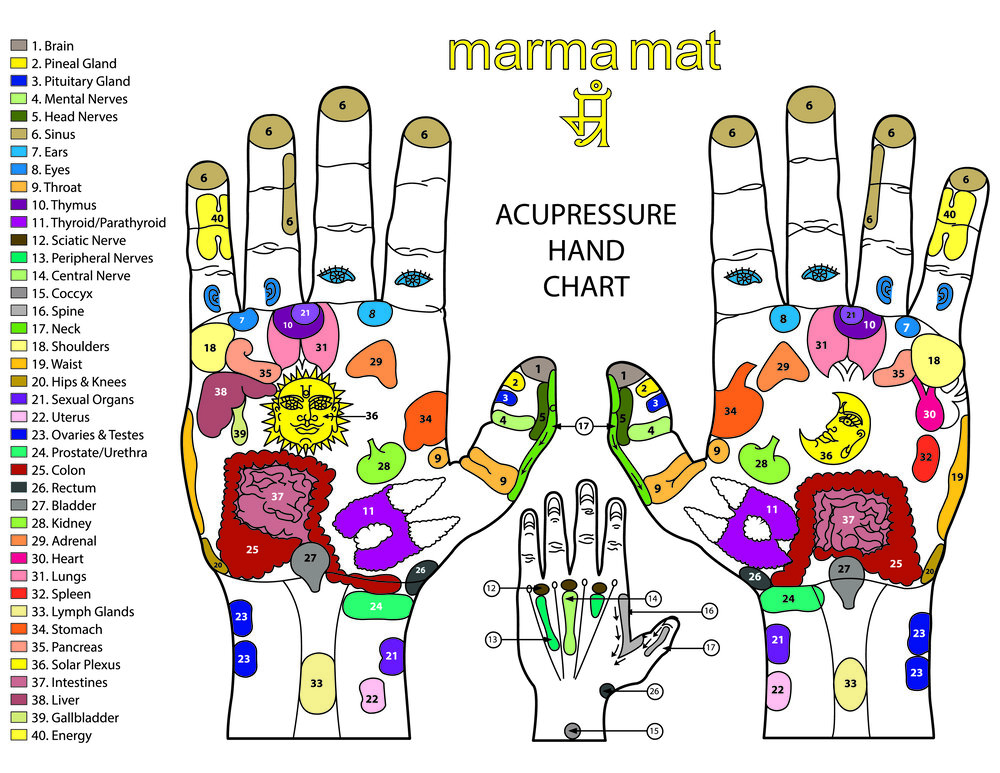
By altering the positions of the hands, mudras create “locks” that guide the body’s energy flow and activate dormant energy for particular purposes.
Mudras may initially seem a little “woo-woo”, but the spiritual and scientific underpinnings of these ancient hand gestures can potentially improve your health on any level. If you have utilized protection crystals, yoga symbolism, or chakra healing, mudras operate in similar realms of mysticism and ancient philosophy.
Prefer video? Here’s one we did to explain the most common 11 mudras for you:
13 Most Common Mudras: Meanings of Sacred Hand Gestures
Of the hundreds of mudras that have been used in spiritual practices over the centuries, these 13 are the most commonly used in meditation, yoga, and artwork.
1. Gesture of Knowledge: Gyan Mudra
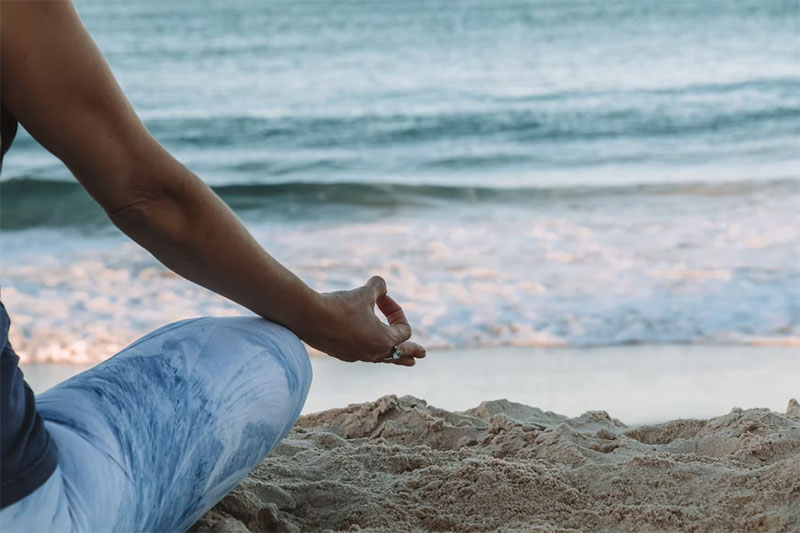
Probably the most well-known of all mudras, the Gyan mudra is most often found in meditation classes. It is also called the Jnana Mudra or the gesture of wisdom. This mudra helps harness the power of concentration, memory, and wisdom. It is also useful for dealing with a creative block.
It is said that holding this mudra during a meditation can help bring new insights for problems in your life. The Gyan gesture can also help reduce stress and improve focused attention on a balancing yoga pose.
How to Do It: Bring the tip of your index finger to touch the tip of your thumb while holding your other three fingers straight.
Associated Elements: Air & Space
2. Mudra of Fearlessness: Abhaya Mudra
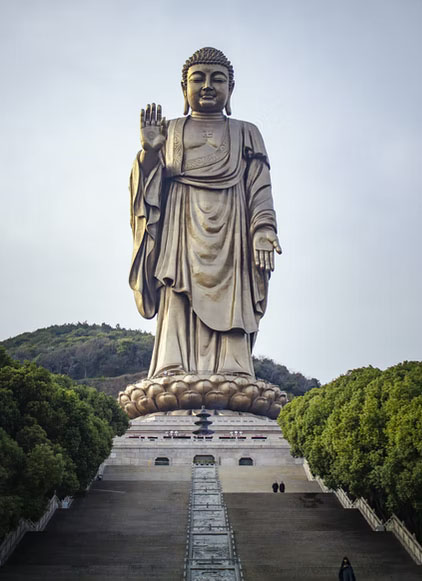
This position is often seen on Burmese and Thai statues of the Buddha and looks much like a relaxed upheld hand. It looks like a greeting “hello” or a signal of “stop”. This modern interpretation is actually aligned with the mudra’s ancient meaning to provide protection and safety from evil.
Abhaya mudra is known to dispel fear and negative forces while bringing a feeling of peace and reassurance to the practitioner. It makes you feel calm, balanced, and secure to overcome fear.
How to Do It: Bring your right hand up to shoulder height and face your palm outward in front of you. Keep your thumb touching the edge of your hand and allow your fingers to subtly relax as you “stop” fear and “wave hello” to a courage.
Associated Elements: All
3. Flowing Air Mudra: Vayu Mudra
In Sanskrit, vayu means “air”. This yogic hand gesture helps to regulate the air element in the body. It is one of the most simple mudras to perform and is thought to help with a range of conditions including:
- Calming stress and anxiety
- Relieving general pain
- Soothing arthritis and joint pain
- Supporting the skin
How to Do It: Tuck the tip of your index finger at the base of your thumb and keep all other fingers straight.
Associated Elements: Air
4. Detoxification Hand Position: Apana Mudra
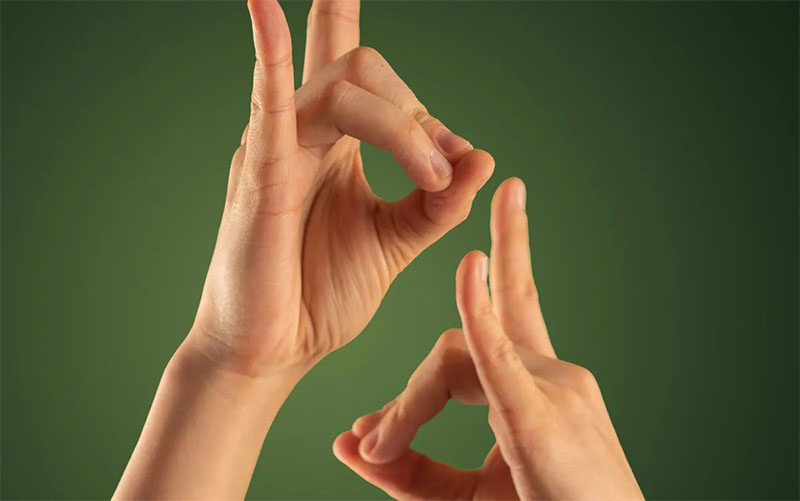
The Apana Mudra is all about detoxification. Apana means “downward moving force”, thus this mudra is linked to flushing out toxins through the excretive and digestive systems. It is thought to strengthen the heart, balance the doshas, and improve flow of sweat, urine, and stool.
How to Do It: Using both you right and left hand, fold your middle and ring finger down while keeping the index fingers pointing upwards. Then, fold the tip of your thumb to touch the tips of your middle and ring finger.
Associated Elements: Space & Earth
5. Mudra of Holding the Jewel: Manidhara Mudra
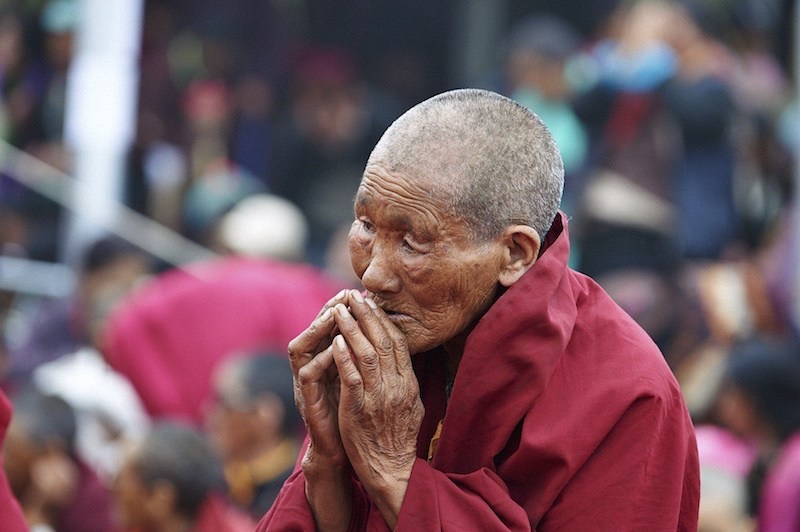
This prayer-like position actually leaves the palms open in the center as if holding a jewel. Often seen in depictions of the Buddha, the Manidhara Mudra is believed to represent a fulfillment of wishes or the abundance of the Buddha’s compassion.
How to Do It: Bring together the right and left hand at the center of the chest. Keep the hands remain arched so that there is space between the palms and fingers.
Associated Elements: All
6. The Teaching Mudra: Vitarka Mudra
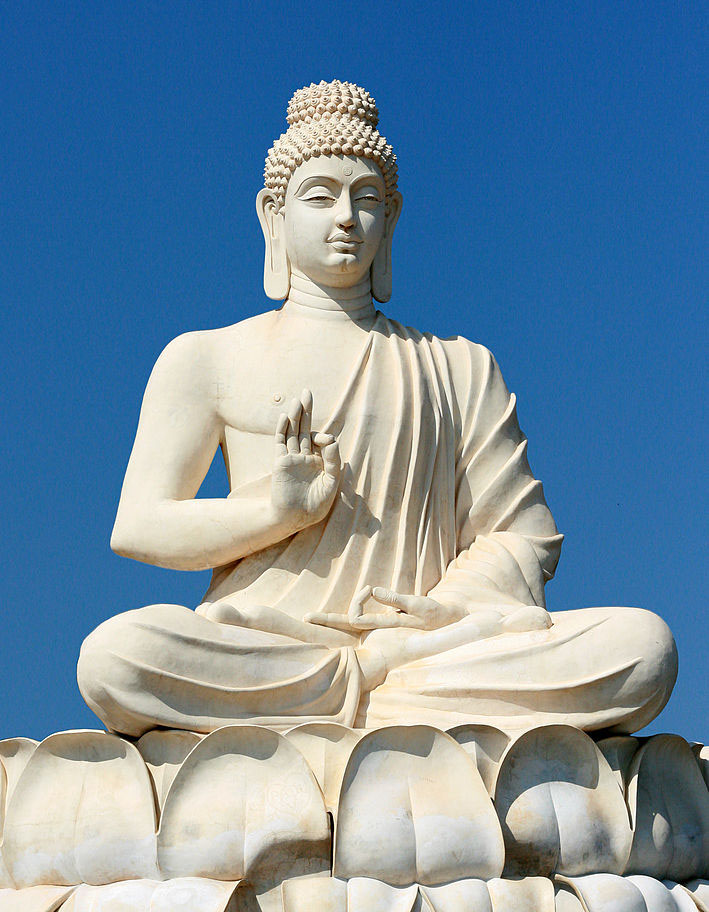
The Vitarka mudra helps transmit the core purpose of important teachings, specifically those of the Buddha or a spiritual guru. The circle between the index finger and thumb signifies the wheel of teaching. This mudra can help you be more receptive to learning and personal growth.
How to Do It: First, touch the tip of your right index finger to your thumb and create a circle. Next, raise the right hand to your heart chakra and face your hand outwards. Keep the left hand resting with the palm facing up and fingers pointed downwards.
Associated Elements: Fire & Air
7. Mudra of Generosity: Varada Mudra
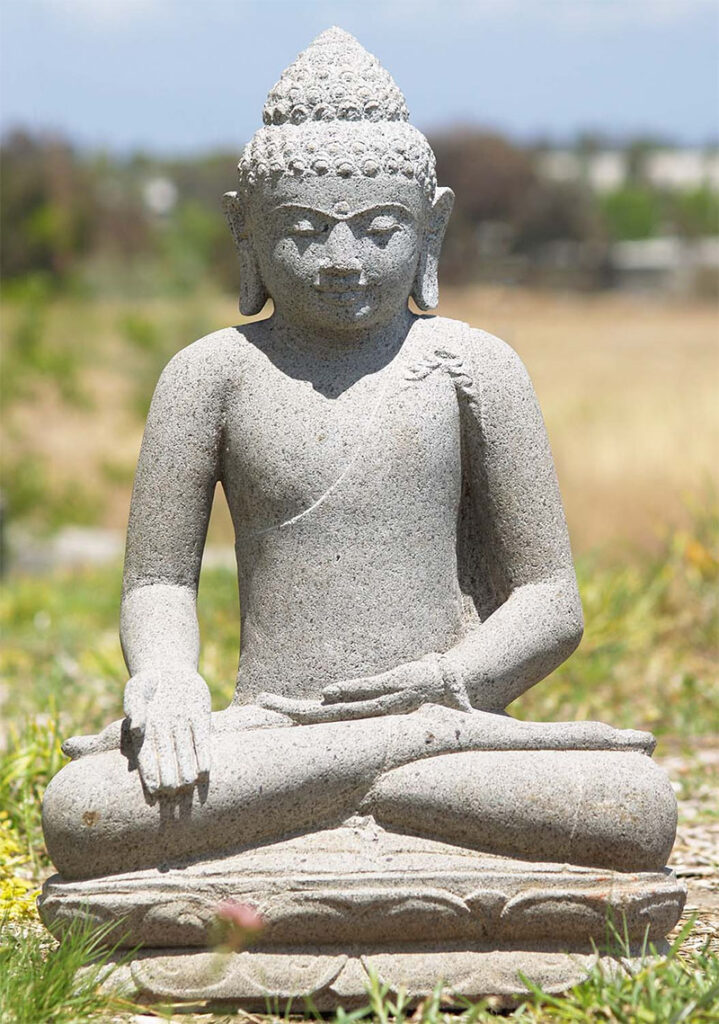
When you are seeking a granting of wishes or trying to be more generous with your time or money, the Varada mudra evokes charity and compassion. This gesture helps spread kindness and good vibes. It looks like an open resting hand at the sacral chakra.
How to Do It: Rest your left hand on your left knee with your palm facing upwards and fingers straight. You can use your right hand to create another mudra or just leave it facing up in your lap.
Associated Elements: All
8. Life Force Gesture: Prana Mudra
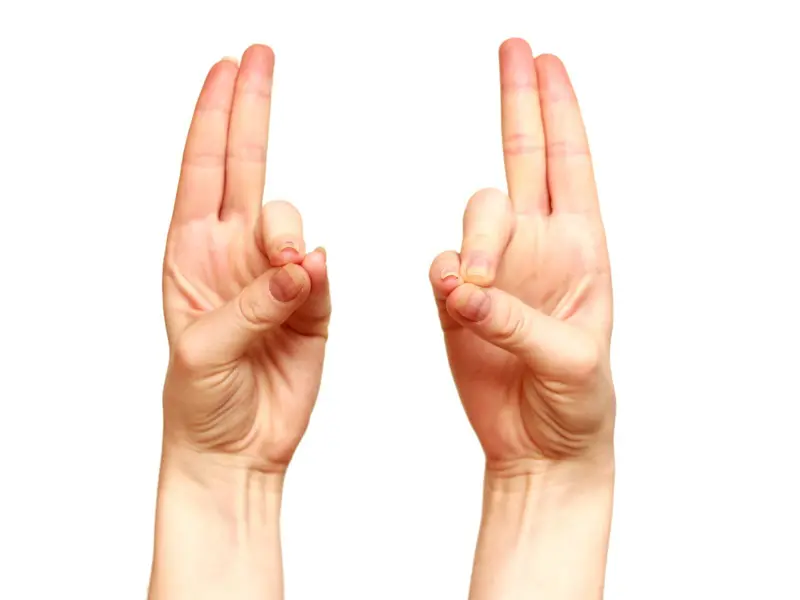
Prana is the vital life force that flows through all living things. The prana mudra aims to open up channels of energy and is especially useful for energizing you in the morning.
How to Do It: Touch the tips of your ring fingers and pinky fingers to your thumb tip. The index and middle fingers stay straight and touching.
Associated Elements: Fire, Earth & Water
9. Gesture of Perception/Intellect: Buddhi Mudra
In Sanskrit, buddhi means “intellect” or “perception”, signifying this “seal” of improved mental clarity. This mudra aims to balance the water element in your body and promote fluid thoughts and higher spiritual faculties during meditation.
How to Do It: Bring the pinky finger to touch the tip of your thumb. Leave your index, middle, and ring fingers extended. Use a light pressure to finish the “seal”.
Associated Elements: Water
11. Namaskara or Anjali Mudra

Commonly known as “namaste hands” or “namaskar”, the Anjali mudra is universally recognized as a symbol of yoga. It translates to “salutation” and is used as a common greeting and also promotes a mutual respect for others.
This mudra can help connect you more to the heart’s language to feel more compassion and love for your fellow humans. Namaskara is most often accompanied by the words “namaste” and a light head bow.
How to Do It: Bring your palms together at heart center with the edges of the pinky fingers and thumbs touching each other.
Associated Elements: All
12. Gesture of Enlightenment: Dhyana Mudra
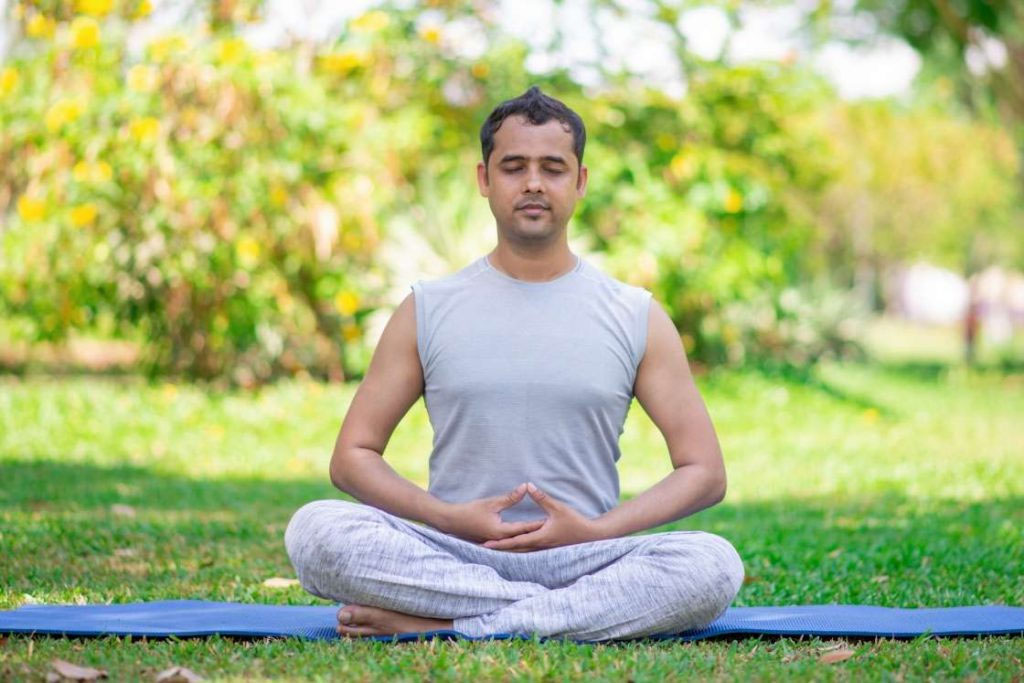
Of all the hand positions we’ve covered, this one is arguably the most powerful and recognizable. The hands coming together in your lap at the base of the sacral chakra symbolizes a cleansing and grounding to awaken your consciousness.
The left hand signifies dharma and the right signifies community. When these come together with the thumbs touching up above, it creates a triangle that points upward to pay respects to Buddha’s life of charity and love. The dhyana mudra is best for using in meditation to promote profound concentration and memory. Dhyana mudra is also known to increase knowledge and memory.
How to Do It: Bring the right hand cradled inside the left hand with palms facing upwards. Bring the left thumb to touch the right and form a triangle. Focus on removing all thoughts from the mind and breathing steadily.
Associated Elements: Air
13. Gesture of Unity: Sankalpa Mudra
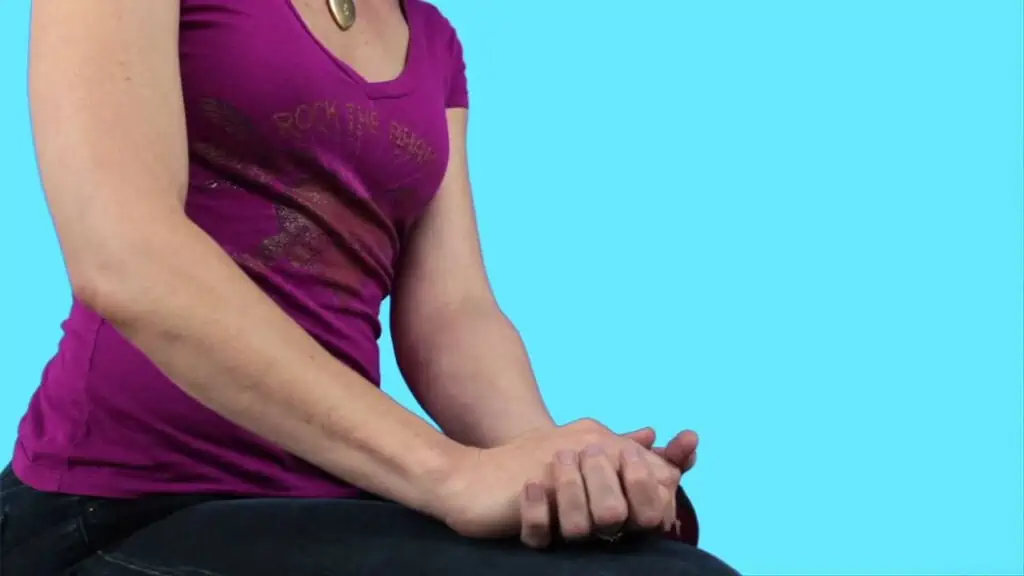
Description: The Sankalpa Mudra is a symbol of unity, determination, and commitment to one’s goals and intentions. It helps in grounding and focusing the mind, making it particularly useful for those who are easily distracted or find it challenging to stick to their resolutions.
How to Do It: Interlace your fingers with the left thumb on top for females and the right thumb on top for males. Place your hands in your lap and relax your shoulders. Close your eyes and take deep breaths, focusing on your intentions.
Associated Elements: Earth & Fire
The Importance of Hand Mudras in Healing
Why Do Hand Mudras Hold Significance?
You may be curious about the discussions surrounding hand mudras. It’s not about appearing trendy during your yoga sessions. The practice of mudras has a history intertwined with our health and wellness. They serve as hidden tools that unlock aspects of our body and mind.
Imagine your body as a residence with rooms each serving a unique purpose and emitting its vibe. Mudras act as keys that open these chambers. Some rooms are designated for relaxation and tranquility, while others are hubs for energy or concentration.
The Scientific Perspective
I understand if some of you are skeptical and questioning the validity of this concept. It may seem unconventional at a glance. Consider this; our bodies operate on intricate systems beyond just physicality. There is an energy network within us that sustains our existence.
Mudras connect with this energy system guiding its flow akin, to traffic signals. They influence the direction and utilization of energy leading to reduced stress levels enhanced focus or an overall sense of equilibrium.
Why not give it a shot? You don’t need to be a yoga expert. Simply find a place, choose a mudra that resonates with you, and see how it feels. Remember, it’s about finding what suits you best. There’s no right or wrong
Who knows? You might stumble upon a mudra that feels tailor-made for you. It’s, about exploring and staying open-minded. There are mudras out there just waiting to be uncovered.
The Significance of Mudras in Improving Mindfulness and Focus
Mudras go beyond hand gestures; they serve as a pathway to mental and spiritual consciousness. When I began including mudras in my meditation and yoga routines, I experienced a change. It wasn’t about the form, but how each mudra facilitated a stronger bond with my inner self. This connection is what many aspire to achieve in their mindfulness and focus practices but often struggle to attain.
The appeal of utilizing mudras for mindfulness lies in their simplicity and accessibility. There’s no need for gear or a specific environment. Whether you’re seated in a space or stealing a moment at your desk, incorporating mudras seamlessly is possible. For example, the Gyan Mudra, known for its association with wisdom and insight also acts as a tool, for grounding and centering oneself aiding in entering a state of mindfulness effortlessly.
Furthermore, maintaining a mudra entails concentration, naturally directing your focus inward. This internal focus forms the basis for enhancing concentration. By holding onto a mudra, you’re not just executing an action; you’re actively engaging in an activity that calms the mind and hones your focus.
Closing Thoughts
Mudras are ancient meditation hand positions that can help uplevel your yoga or spiritual practice. They evoke sensory powers that activate specific energy channels in your body.
Depending on the mudra you choose, you may be able to use it in combination with meditative practices to reinforce specific healing states. But remember, mudras are sacred yoga symbols that should be used respectfully.
Namaste!
Pop quiz! 🧘🤔
Mudras can only be performed during meditation.
The Gyan Mudra is also known as the Gesture of Knowledge.
Mudras are specific to Hinduism and cannot be found in other cultures.
FAQs
Does hand mudra really help?
Hand mudras are symbolic gestures often used in yoga, meditation, and other spiritual practices to promote physical, mental, and spiritual well-being. Many practitioners and traditional texts claim benefits from practicing mudras, which range from improving concentration to promoting energy balance and healing specific ailments. However, scientific research on mudras is limited. Some people believe they’ve experienced positive effects from using mudras, while others may not notice any significant change. If someone is interested in using mudras, it’s recommended to approach them with an open mind and to gauge their effectiveness based on personal experience.
How do hand mudras work?
The theory behind hand mudras is based on the concept of the five elements (Earth, Water, Fire, Air, and Ether/Space) present in the human body. Different parts of the hand are believed to represent these elements. By creating specific patterns or configurations with the fingers, it is thought that one can manipulate or balance these elements within the body, leading to various benefits. Mudras are believed to redirect the energy flow, stimulate different parts of the body, and enhance one’s meditation or yoga practice. While these concepts are deeply rooted in traditional Eastern philosophies, they are not universally accepted or supported by modern science.
What are the powerful mudras?
There are many mudras, each with its significance and purported benefits. Some of the commonly known and practiced mudras include:
Gyan Mudra (Mudra of Knowledge): Tip of the thumb touches the tip of the index finger, stimulating knowledge and concentration.
Prana Mudra (Mudra of Life): The thumb, ring, and little fingers touch at their tips, believed to invigorate the body and improve the immune system.
Apana Mudra (Mudra of Digestion): The thumb touches the middle and ring fingers’ tips, thought to aid digestion and detoxification.
Shunya Mudra (Mudra of Emptiness): The thumb presses the middle finger, believed to help with earaches and other ear ailments.
Dhyana Mudra (Meditation Mudra): Hands are placed on the lap, one on top of the other with thumbs touching, often used in meditation to aid in concentration and relaxation.
What is the power of mudra hand signs?
Mudra hand signs, according to traditional beliefs, have the power to manipulate the body’s subtle energies, promote physical, emotional, and spiritual healing, and enhance one’s yoga or meditation practices. The power of a mudra is thought to arise from the redirection of energy and balance of the elemental forces within the body. Practitioners believe that consistent and mindful practice of specific mudras can lead to desired outcomes in one’s health, well-being, and spiritual development. However, as with all practices, individual experiences may vary, and it’s essential to approach mudras with patience, understanding, and an open mind.







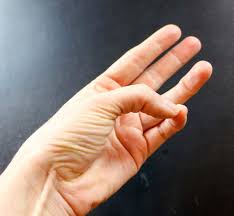
Thank you so much for putting this together – I’ve been looking for something like this! I esp love the diagram included for the palms/pressure points.
Thank you for this ❤️